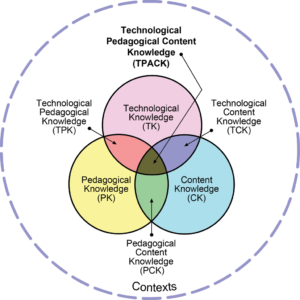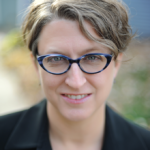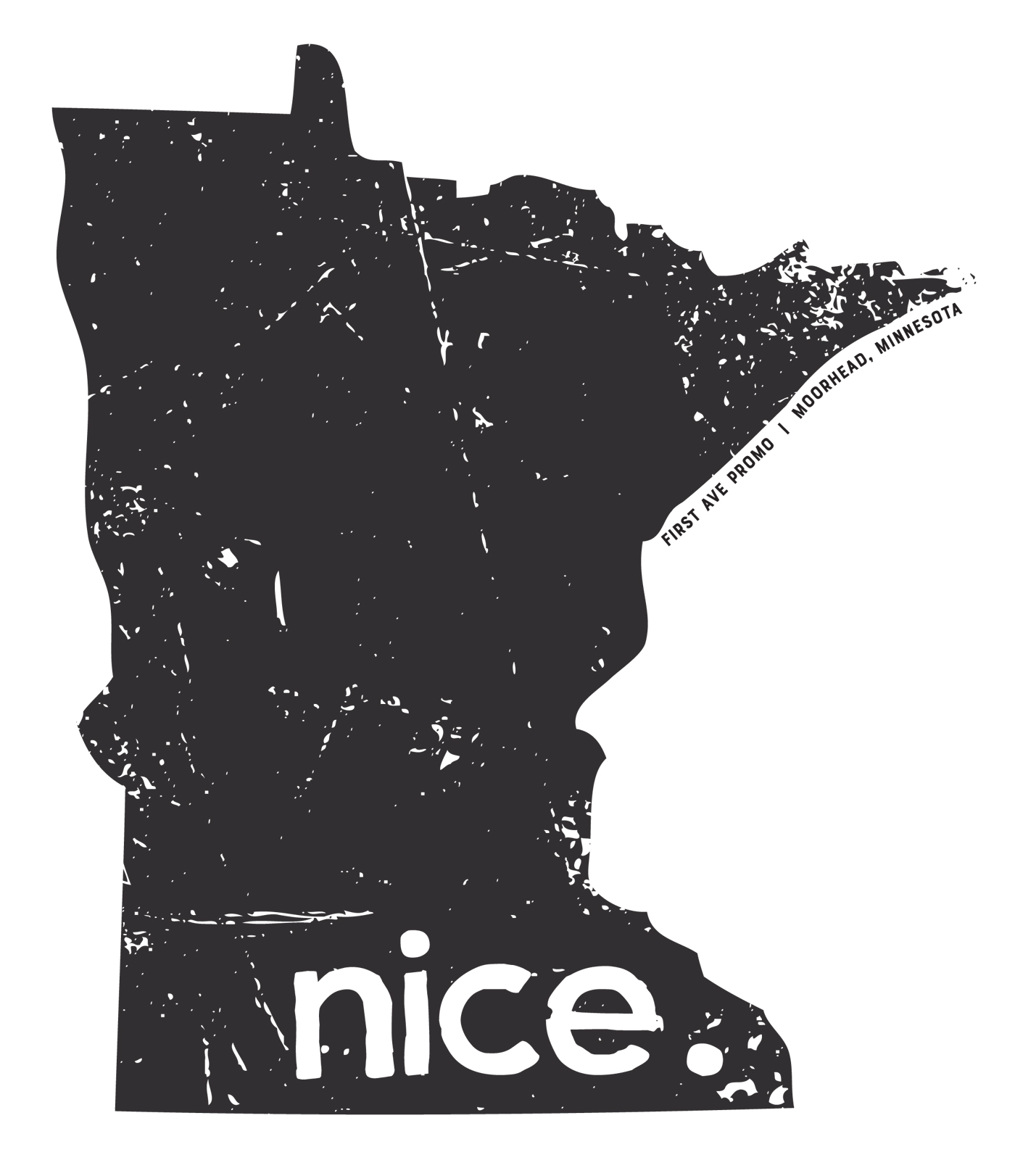In this action research report, the author describes key turns in a professional development opportunity on using social media in classrooms, which was created and implemented for teachers of English language learners. The paper features reflection about the researcher/PD facilitator role and its impact on the engagement of the participating teachers.
Teachers are generally their own best critics and will usually willingly invest time and attention beyond what is compensated to improve the learning experiences of their students. Because our days are filled with encounters with digital technologies, this work includes figuring out how to make good use of information and communication technologies (ICTs) in the classroom. This shift has pushed teachers to rethink long-held instructional preferences and routines and has created tension in the work day of some who are figuring out how to embrace ICTs.
Practitioner-oriented education conferences usually offer professional development (PD) options to help teachers cope with new technologies. Other options abound, as well, including webinars and personal learning communities. What follows is a description of a PD project that I created a few years ago, when I was asked by leaders of a group of programs supporting adult English language learners (ELLs) to develop training on integrating social media into English language and literacy classrooms. The impetus for the PD was the program leaders’ observation that, despite access to training workshops and conference presentations, many area teachers were not using technology in their classrooms. The goal of the PD was, therefore, to encourage the participating teachers to build their ICT skills by using them in a supportive online community of practice, so that they could eventually integrate use of social media into their instruction.
As both PD facilitator and researcher in this project, my involvement provided an opportunity to observe the dedication and fears of these teachers as they experimented with new ideas and worked to overcome barriers that shaped their participation. This positionality situated me for a reflexive approach to the PD, and throughout the project I adjusted the shape of the PD in response to their needs. Hence, the development and implementation of the PD became a cyclical process that mirrored the reflexive and collaborative nature of action research (Adelman, 1993; Avison, Baskerville, & Myers, 1998; Carr, 2006; Williams, 2007). I implemented the PD and continually reflected on and revised it based on feedback that I got from the teachers along the way. This reflexive cycle, the process that serves as the backbone of action research, elucidated several useful findings. Firstly, teachers need more opportunities to try out new technology in thoughtful ways, but this is hard work. Secondly, real shifts in instructional practice and use of ICTs cannot happen without adequate infrastructure and affective support for the teachers engaged in the work. Finally, the PD itself must meet teachers where they are, not push beyond their current skill or comfort level, especially when it involves technology use.
New Technological Reality Requires a New Approach to PD
Both the literature and my personal experience show that much PD on technology issues is provided in singular workshops or presentations (Jacobson, 2012; 2016). Indeed, this is the preferred approach of many ABE teachers (Marchwick, Johnson, & Parrish, 2008); however, in this new world of continuous technological development, it is likely insufficient for effecting lasting change in practice. Previously published literature shows that the approach falls short because of limited technology skills of teachers, insufficient opportunities for experimentation, and lack of infrastructure to support implementation (Jacobson, 2012; Vrasidas & Glass, 2007). Further, teachers need sustained practice over several years in order to gain comfort integrating ICT into classrooms (Donnelly et al., 2002).
Online Communities of Practice
Communities of Practice (CoP), a group of people who come together to accomplish a shared goal by working together to produce shared resources, provide the means by which to engage in such extended PD (Wenger, 2000). CoPs are “devised for the purposes of knowledge construction among professionals; they are social structures providing an opportunity to build skills and relationships, providing the means through which professionals can engage…” (Brooks, 2009, p. 26). Online venues for CoP marked by rich dialog and collaboration is the means by which learning occurs (Brooks, 2010). For this reason, establishing a CoP is a valid response to Vrasidas & Glass’ (2007) call for ongoing PD to meet educators’ need for lifelong learning opportunities, in this case in technology.
In response to these findings I decided that an approach more thorough than a one-day workshop was required to encourage teachers to gradually build their own technology skills while, at the same time, gradually introducing a wider variety of learning technology into their classrooms. The purpose of the research was to, narrowly, explore the impact of such an extended professional development for adult EL teachers. More broadly, the study explored teacher preference in the range of PD activities offered.
These two questions guided the study: 1) What issues inhibited and/or supported the participation of teachers in PD with an online component? 2) What changes in PD were required in response to the participation and needs and preferences of the participants?
Methodology – Action Research
Action research is conducted with a pragmatic epistemological perspective where the production of knowledge begins with a practical problem to be solved, and where that new knowledge is not an end itself, rather a means for solving the problem (Oquist, 1978). It begins with an idea or value to test and, following an iterative dialogic process between facilitator and participants, the value and assumptions are revised (Checkland & Holwell, 1998). In this research, I began with a clear value – to support teachers as they used technology to learn how to integrate technology in their classrooms. What followed was a dialogic process where, as facilitator of the PD, I engaged with the participants to test this value or practice, engaged in a dialogic process and reflection which prompted revised assumptions and the course of the PD, and developed a better understanding of the issues involved with technology integration.
Participants
The participants in this study were twenty-two midwestern adult education teachers. Most of the data comes from an important subgroup of participants, a group of ten teachers who all worked at the same community based organization that supported refugee integration and offered classes to English language learners from mostly southeast Asia. I will refer to it as the “Center” in this paper. The technology skill range of the teachers involved was wide. On one hand, there were several teachers from the Center who could not log in to their email accounts (they could not remember their passwords and did not know how to retrieve them); on the other hand, there were teachers from other organizations who were comfortable using basic word processing software, email, and integration of online resources in their classroom instruction. There were even a few who were building their own class websites. Based on my observation as a PD facilitator with ABE teachers, the tech skills of the teachers presented likely mirrored the range of skills evident in many ABE programs.
Data Sources
The two-month PD project offered a range of opportunities to gather data that, as a whole, painted a picture of participant participation and perceptions of the PD itself.
Observational notes. There were several occasions, both in-person meetings and webinars, after which I made notes about the experience of the participants as learners and mine as a facilitator. The content of these notes included my observations of teachers’ affect and comments they had made about barriers they experienced with technology. I also took copious notes while planning and making adjustments to the PD.
Comments posted to blogs and online discussion forum. Teachers were encouraged to write blog posts discussing their integration of featured learning technology into their classrooms. Additionally, they had the opportunity to contribute to online discussions on the themes of the PD. The discussion pages were also a place for everyone, including me, to post resources.
Interviews with two focal participants. Two of the participants who persisted in the PD agreed to be interviewed. These two female teachers from the Center were over the age of 55, had some competence in using common ICTs (but not more advanced skills like building websites), and were relatively new to teaching in ABE. My interviews were semi-structured and open-ended, which ensured that the same topics were covered with each interviewee but allowed for the flexibility of a conversational approach that encouraged relevant information and topics to emerge though follow-up questions (Cohen, D., 2006; Rubin & Rubin, 2012).
Data Collection and Analysis
As I engaged participants in a variety PD activities, I generated rich data from the sources described above. I confirmed the validity of these data using member checking (Lincoln & Guba, 1985) by ‘on the spot’ restating of participant ideas voiced during interviews and in conversations reported in observational data and by providing opportunities for participant review of interview summaries. To analyze these data, I relied on constant-comparison (Lincoln & Guba, 1985), reading notes and searching for shared themes and findings in multiple data sources.
What happened?
Working with the program leaders, I had developed an approach creating an extended learning opportunity with a two-fold focus: a) introduce new learning technologies and strategies for integrating them into classrooms and b) help teachers build their own technology skills by doing this work online. The plan was for teachers to engage in any of the following avenues for learning:
- in-person kickoff meeting;
- two months of online discussion;
- two webinars.
I developed these learning opportunities based on findings from prior research on professional development for educators (Jacobson, 2016; Vrasidas & Glass, 2007) and on use of technology in instruction (McCain, 2009; Mishra & Koehler, 2006; Moore, 2007; Rosen & Stewart, 2015). A description of the major components of the PD, as initially conceived, follows.
TPACK

To support knowledge and skills growth with technology integration, I introduced the Technological, Pedagogical and Content Knowledge (TPACK) framework (illustrated in Figure 1), which was designed to model a teacher’s awareness of their personal knowledge of how each of the three components impacts their teaching (Mishra & Koehler, 2006).
Mishra and Koehler (2006) suggest that a teacher can make best use of a learning technology if he/she/they has an awareness of personal knowledge in the three areas. This can serve as an impetus for a teacher to develop skills where lacking and to make thoughtful choices about how to match a particular technology in support of given content and instructional strategies (or, pedagogy, the “P” in the model). Further, such careful choices about employing ICT use in classrooms can illustrate the relevance of whatever technologies they employ.
Schoology
An important strategy for delivery of the PD was use of an online system for resource sharing and asynchronous communication. I chose this approach to push teachers to develop empathy about what it is like to learn to use technology in learning, and to provide an example of how to use the particular technology to support instruction. I selected Schoology, a free learning management system (an online system for resource sharing, discussion, and tracking student progress) because it resembles Facebook, and is designed for ease of use (e.g., the page layout is simple and navigational cues are obvious).
Kickoff Meeting
Twenty-two teachers attended the kick-off meeting, where teachers got to know each other and were introduced to the technologies and concepts central to the entire PD experience. At the meeting the teachers practiced using a demonstration course in Schoology by creating their own accounts, logging in, and navigating through the different elements of the online tool including: personal profile, blog page, discussions, and posted resources. They also had an opportunity to consider the different elements of TPACK and worked collaboratively to brainstorm opportunities for balanced and thoughtful technology integration. For about half the participants (those who were already proficient with this work), this was the only engagement with the PD.
Online Collaboration
The two months that followed the face-to-face kickoff provided opportunities for the remaining teachers to participate in thematic online discussions in Schoology and tune in to two webinars that I included to ensure that participants who best benefited from synchronous interaction would feel their needs were met. The topics and activities as planned and completed are described in Table 1. Note that both the discussion and webinar for Topic 3 were not completed as planned.
Table 1. Online interactions
| Online Discussion | Webinar | ||
| Topic 1 | Kickoff and following week: TPACK and Schoology | Completed | Not planned |
| Topic 2 | Month 1: Tech tools for EL classrooms* | Completed | Completed |
| Topic 3 | Month 2: Mobile phones in learning* | Not completed | Not completed |
| *Topics selected by participants in pre-PD survey | |||
The goal of the online discussion activity in Topic 1, which happened in the week following the kickoff meeting, was to further develop Schoology skills gained in the kickoff meeting and to use Schoology to continue reflection and discussion on TPACK. After that week, Topics 2 and 3 were intended to introduce new concepts and were set up to follow the same pattern: 1) presenting resources that teachers might use in their classrooms, 2) facilitating online discussion about how the resources might be used, and 3) wrapping up the topic with a webinar.
Participation in PD delivered as planned. There was moderate participation the PD activities in the first week of the online work; however, it fell of dramatically during the first month, diminishing to virtually no participation in month two. My goal had been to create and foster a CoP to allow opportunities for those with more knowledge to share with others using an online space that was new to everyone, providing an opportunity for even the more technologically inclined participants to gain new skills and knowledge. Table 2 shows the participation for the PD overall.
Table 2. Participation
| Activity | Number of participants |
| Kick-off meeting | 22 attendees |
| Online Discussions
Topic 1 – TPACK/Schoology Topic 2 – Tech tools for EL classrooms Topic 3 – Mobile phones in learning |
22 participants logged in at least once 5 participants logged at least once 1 participant logged at least once. |
| Webinar 1 – Tech for EL classrooms | 13 attendees |
| Webinar 2 – Mobile phones in learning* | 2 attendees |
| *Topic shifted to building websites due to learner preference | |
Participating in Schoology discussions. I had left the kick-off meeting with high hopes. Though several teachers from the Center had struggled with the Schoology login process, I felt that there had been enough activity by confident and proficient teachers to carry the momentum and spur rich discussion online. This was not the case. As you can see in Table 2, after the initial topic, only five participants returned for the online portion of the PD. In the first month of use, discussion forums were used by only a small number of participants, and this dropped off dramatically after the first month.
Social presence in Schoology. An important point stressed early and often in the PD was the idea of building social presence within the online course. Social presence is defined as the degree to which one asserts or makes him or herself visible within an online forum (Aragon, 2003; Biocca, Harms, Burgoon, Interface, & Lansing, 2003; Palloff & Pratt, 2007). Palloff and Pratt (2007) described learning environments where participants have developed social presence by building profile pages, so I encouraged teachers to develop their Schoology profile page with information about their professional experiences and photos. I also encouraged blogging their reflections on the PD experience. Feeling noticed or noticeable in an online community motivates further participation, and if online participants feel connectedness they are more likely to collaborate and support both their own and their peers’ learning (Aragon, 2003; Palloff & Pratt, 2007).
To measure social presence of my participants I relied on both a count of the blog posts and an evaluation of the completeness of the participants’ profile pages. In addition, I found data in the observational notes, the interview notes, and survey responses reflecting on participant opinions about developing social presence. Table 3 illustrates the degree to which participants made themselves visible in the Schoology site, showing the underdeveloped profiles of most of the participants.
Table 3. Schoology Social Presence
| Social Presence Markers | Participants (N=22) |
| Profile photo | 10 |
| Email only | 7 |
| Minimal professional and personal info | 9 |
| Fully developed profile | 5 |
| Posted to blog at least once | 11 |
| Responded to someone else’s blog post | 9 |
| Joined other Schoology user groups | 3 |
Not even half of the participants included a photo in their profile and many left the personal or contact information sections incomplete. Similarly, the blogging feature was underused. This and the low number of discussion posts previously described, reflected participant tendency to lurk rather than post information to the site. Indeed, participant efforts to build social presence were only a fraction of what they could have been.
The webinars. The webinars were marginally more popular than the online discussion and blogs. We used an application called AnyMeeting, chosen because it was free and relatively easy to use. Looking back at Table 2 you can see that there were thirteen participants in the first webinar and only two in the second. The first webinar featured peer presentations on novel approaches to technology integration in ELL classrooms, including the use of iPads and apps and the use of digital cameras for the construction of language experience approach (LEA) stories (a strategy for builidng reading and writing proficiency through use of the retelling of personal experiences). The second webinar was to have provided an opportunity for teachers to hear about resources supporting use of mobile phones in classrooms, but the only teacher who logged in said she preferred to talk about website building, so she and the guest speaker spent the time doing just that.
Reflection and Response
The low level of activity on the Schoology site after the first week indicated to me that the original PD plan was not suitable for the group of teachers present. I was especially concerned that most of the teachers from the Center had dropped out. Among them were teachers who had very little experience using technology in their own lives. After some reflection and discussion with the teachers and program leadership, I chose to emphasize work on learning about how to use technology rather than just employing the online technologies in the PD, hoping to simplify the experience for those who might have been overwhelmed by Schoology.
To support this shift in goals, I added two in-person meetings for the teachers at the Center. At the meetings, I highlighted the materials and resources that had been posted on the Schoology site and gave the teachers time to practice logging in and to experiment with the site with my support. Teachers also conversed about their use of technology and when and how any of the resources they had seen could be integrated into their instruction. The meetings were part of a mandatory monthly staff meeting at the Center, so were attended by all ten of its participating teachers. The teachers engaged in lively discussion about technology use left the meetings with some concrete skills.
Discussion
What issues inhibited and/or supported the participation of teachers in PD with an online component? Review of my data and the PD description indicate several barriers to successful implementation of the PD as originally conceived: 1) inadequate time and resources to support the PD, 2) a lack of trust in the online space, and 3) a lack of shared priorities for PD. Because much of prior research supports the need for adequate time for successful PD (Jacobson, 2012; 2015; Vrasidas & Glass, 2007), the discussion that follows focuses on the two latter, more novel, findings.
Lack of Trust
Trust is a critical element in sustaining learner participation in online learning spaces (Brookfield, 2006; Kelly, 2008; Ortner, 2010). I had designed the online space to be a supported, intimate, and bounded online community – a safe space for teachers new to using social media for their own learning to have a positive experience. However, this was not the case. Many of the teachers from the Center were unwilling to participate in an online CoP because they did not trust the security of the website and felt there was a strong likelihood of their privacy being violated. At the kick-off meeting, they articulated discomfort when asked to find a picture to post or to add descriptions of their personal or professional lives. Hence, they contested calls to build social presence and chose to not be ‘visible’ in the space. Smith and Sivo (2012) suggest that lack of online social presence has a negative impact on teachers’ perceptions about how easy it is to use an online tool, consequently discouraging its use. Hew and Hara (2007) suggest that the mental and physical effort required to log in is sometimes a barrier to participation. Both findings from previous research possibly explain the lack of participation here.
Additionally, several of the Center teachers commented that they were reluctant to share because they were new to the use of technology for instruction and understood that others in the group had more experience. They were afraid of making mistakes and of being exposed as lacking expertise. Such comments shared during the kickoff meeting and heard by the more technologically experienced teachers may have been a disincentive for the latter group to participate. Hew and Hara (2007) write, “Sharing knowledge is an endeavor that demands the sharers’ time and energy. Thus, knowledge sharers should not be made to feel that the time and energy they spent have been wasted on seekers who are simply not keen to learn” (p. 592).
Priorities
I had been hired as a consultant by the leadership of the organization to support their goal of integrating more varied and complex learning technologies into classrooms. In their view, teachers needed to be pushed to try new technology so that learners would have an opportunity to experience technology use in the short time they are enrolled in programming. This begs the question – Whose priority was it to engage in the PD? Cassell and Johnson (2006) citing Park (1999) write, “Park (1999) argues that participatory research is motivated by action, and that the force that lies behind that action is a vision of what ought to be…” (p. 798). In this case, the vision was to support the development of the teachers into peer experts to facilitate on-going learning of members of the community. It was not likely, it seems, the intention of the teachers to become those peer experts. In this more critical view of the outcome of the PD, my assumption that teachers would engage in such interactions was likely flawed from the onset of the project.
What the organization leaders and I were hoping to accomplish was a change in ways of being. We were asking teachers who were not used to using the internet to view it as a venue for collaboration. During the interviews, I learned that teachers from the Center had been required to attend the kickoff meeting. They had not volunteered, and because many of them possessed such limited technology skills, there was no chance that they could fully make use of the collaborative nature of the online component of the PD. Additionally, one of the focal participants commented, in her interview, that many of the resources recommended were not “immediately relevant” because it would have taken too long for her to develop the skills to actually use them, which diminished her motivation to participate.
Implications
The most important implication or lesson learned here concerns the skills and experiences of the teachers invited to participate. As indicated previously there was a broad range of skill represented in the group. Successful CoPs require a convergence of competence, “a shared competence that distinguishes members from other people” (Wenger, 2006, p. 1). Given this wide range of skill and the evident failure of the Schoology site to become an accepted venue for collaboration, I suspect that a more homogeneously skilled group might have worked better. Further, a sense of belongingness is essential for such a community to develop. Brooks, (2010) writes that there should be “a shared faith that members’ needs will be met through their commitment to be together” (p. 263). I think because there was little “convergence of competence and experience,” in Wenger’s words, we did not accomplish building a community in this sense.
Also significant was my positionality as facilitator. Furnborough (2012) writes of the importance of tutors not pushing students if autonomy in learning is to be preserved. In the same way, a facilitator should not push teachers into change that they are not ready to make. I had felt it important to include multiple and diverse opportunities for learning and interaction because learning happens best when there is an opportunity for meaningful authentic activities and peer collaboration. Hence, I used the opportunity to implement PD that promoted technology integration and provided incentives to encourage teachers to engage in lifelong learning. Though I thought I had created a professional development experience for a group of teachers voluntarily participating, it is possible that, in the eyes of most the teachers at the Center, I was actually there to support the agenda of the program leadership. This not only compromised my position as facilitator, it also complicated a primary tenant of action research, that those involved in the learning or change are key participants in the process.
Conclusion – Lesson Learned
If I had responded more deftly and shifted my strategies earlier on with the teachers from the Center, I may have saved many of them from engaging in PD activities that many of them viewed as not relevant. When I think back I cringe at the embarrassment and futility some of those teachers must have felt being asked to create website accounts using email addresses they could not remember how to use. The big lesson for PD here is to meet teachers where they are. Help them use the skills they already possess and, gradually, encourage them to develop new skills.
References
Adelman, C. (1993). Kurt Lewin and the Origins of Action Research. Educational Action Research, 1(1), 7–24.
Aragon, S. R. (2003). Creating social presence in online environments. New Directions for Adult and Continuing Education, 2003(100), 57–68.
Avison, D., Baskerville, R., & Myers, M. D. (1998). The structure of power in action research projects. In N. Kock (Ed.), Information systems action research: an applied view of emerging concepts and methods. Springer.
Biocca, F., Harms, C., Burgoon, J. K., Interface, M., & Lansing, E. (2003). Toward a more robust theory and measure of social presence: Review and suggested criteria. Presence, 12(5), 456–480.
Brookfield, S. (2006). What students Value in Teachers. In The Skillful Teacher: On Trust, Technique, and Responsiveness in the Classroom (pp. 67–78). San Francisco: Jossey-Bass.
Brooks, A. K. (2009). Complexity and community: Finding what works in workplace ESL. New Directions for Adult & Continuing Education, (121), 65–74.
Brooks, C. F. (2010). Toward “hybridised” faculty development for the twenty-first century: blending online communities of practice and face-to-face meetings in instructional and professional support programmes. Innovations in Education and Teaching International, 47(3), 261–270.
Carr, W. (2006). Philosophy, Methodology and Action Research. Journal of Philosophy of Education, 40(4), 421–435. d
Cassell, C., & Johnson, P. (2006). Action research: Explaining the diversity. Human Relations, 59(6), 783–814.
Checkland, P., & Holwell, S. (1998). Action research: Its nature and validity. Systemic Practice and Action Research, 11(1), 9–21.
Cohen, D. (2006). Qualitative research guidelines project: Semi-structured interviews. New Jersey. http://www.qualres.org/HomeSemi-3629.html
Furnborough, C. (2012). Making the most of others: autonomous interdependence in adult beginner distance language learners. Distance Education, 33(1), 99–116.
Hew, K. F., & Hara, N. (2007). Empirical Study of Motivators and Barriers of Teacher Online Knowledge Sharing. Educational Technology Research and Development, 55(6), 573–595.
Jacobson, E. (2012). Adult basic education in the age of new literacies. New Literacies and Digital Epistemologies.Volume 42. New Literacies and Digital Epistemologies (Vol. 42). ERIC.
Jacobson, E. (2016). Expanding notions of professional development in Adult Basic Education. In M. Knobel & J. Kalman (Eds.), Literacies, Digital Technologies and Teachers’ Professional Development (pp. 173–193). New York: Peter Lang. http://doi.org/10.1002/ace.101
Kelly, R. (2008). Creating Trust in Online Education. Faculty Focus: Higher Ed Teaching Strategies. Retrieved from http://www.facultyfocus.com/articles/creating-trust-in-online-education/
Lincoln, Y. S., & Guba, E. G. (1985). Naturalistic Inquiry. Beverly Hills, CA: SAGE.
Marchwick, K., Johnson, K., & Parrish, B. (2008). Instructional practices alignment project summary ABE transitions to post-secondary initiative: Alignment of ABE and post- secondary instructional practices. St. Paul. www.atlasabe.org/_literature_54452/2008_Summary_Instructional_Alignment
McCain, M. (2009). The power of technology: expanding access to adult education & workforce skills through distance learning. New York. http://www.caalusa.org/POWER_OF_TECH.pdf
Mishra, P., & Koehler, M. J. (2006). Technological pedagogical content knowledge: A framework for teacher knowledge. Teachers College Record, 108(6), 1017–1054.
Moore, H. (2007). Non-language policies and ESL: Some connections. TESOL Quarterly, 41(3), 573–583 CR – Copyright © 2007 Teachers of En.
Oquist, P. (1978). The Epistemology of Action Research. Acta Sociologica, 21(4), 143–163.
Ortner, N. A. (2010). Developing trust; the superglue of online communities. California Virtual Campus. Retrieved from http://www.cvc.edu/2010/02/developing-trust-the-superglue-of-online-communities/
Palloff, R. M., & Pratt, K. (2007). Building online learning communities: Effective strategies for the virtual classroom (2nd ed.). San Francisco: Jossey-Bass. Kindle file.
Rosen, D. J., & Stewart, C. (2015). Blended Learning for the Adult Education Classroom. Essential Education. http://app.essentialed.com/resources/blended-learning-teachers-guide-web.pdf
Rubin, H. J., & Rubin, I. S. (2012). Qualitative interviewing: the art of hearing data. Los Angeles: Sage Publications, Inc.
Smith, J. A., & Sivo, S. A. (2012). Predicting continued use of online teacher professional development and the influence of social presence and sociability. British Journal of Educational Technology, 43(6), 871–882.
Vrasidas, C., & Glass, G. V. (2007). Teacher Professional Development and ICT: Strategies and Models. Yearbook of the National Society for the Study of Education, 106(2), 87–102.
Wenger, E. (2000). Communities of practice and social learning systems. Organization Articles, 7(2), 225–246.
Wenger, E. (2006). Brief introduction to communities of practice. Retrieved from http://wenger-trayner.com/intro-to-cops/
Williams, B. (2007). What teacher behaviors encourage one at-risk African-american boy to be a productive member of our classroom community. In C. Caro-Bruce, M. Klehr, E. Burmaster, K. Zeichner, & R. Flessner (Eds.), Creating Equitable Classrooms Through Action Research (pp. 100–124). Thousand Oaks, CA: Corwin Press.






